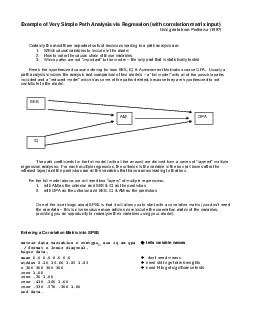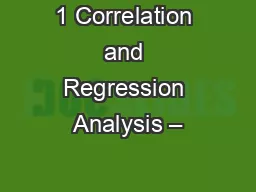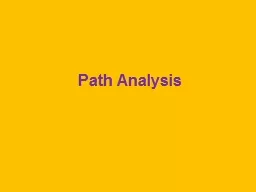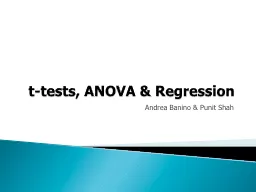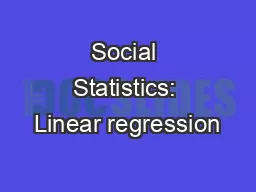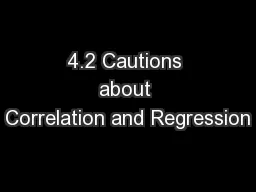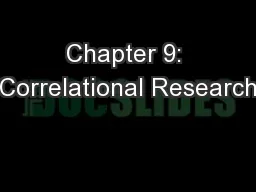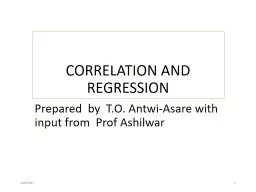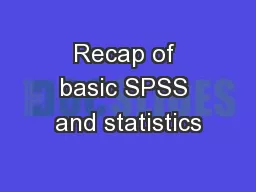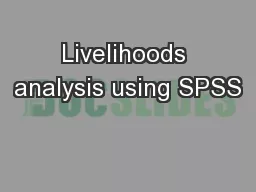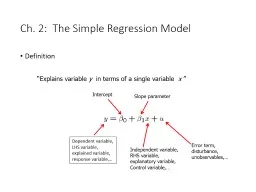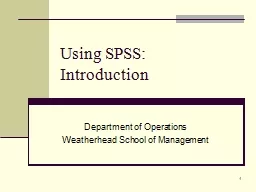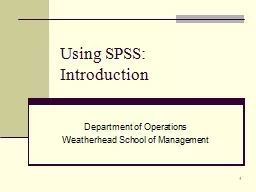PDF-Example of Very Simple Path Analysis vi a Regression with correlation matrix input Entering
Author : min-jolicoeur | Published Date : 2014-12-13
begin data mean 00 00 00 00 stddev 210 1500 325 125 n 300 300 300 300 corr 100 corr 30 100 corr 410 160 100 corr 330 570 500 100 end data brPage 2br Getting the
Presentation Embed Code
Download Presentation
Download Presentation The PPT/PDF document "Example of Very Simple Path Analysis vi ..." is the property of its rightful owner. Permission is granted to download and print the materials on this website for personal, non-commercial use only, and to display it on your personal computer provided you do not modify the materials and that you retain all copyright notices contained in the materials. By downloading content from our website, you accept the terms of this agreement.
Example of Very Simple Path Analysis vi a Regression with correlation matrix input Entering: Transcript
Download Rules Of Document
"Example of Very Simple Path Analysis vi a Regression with correlation matrix input Entering"The content belongs to its owner. You may download and print it for personal use, without modification, and keep all copyright notices. By downloading, you agree to these terms.
Related Documents

